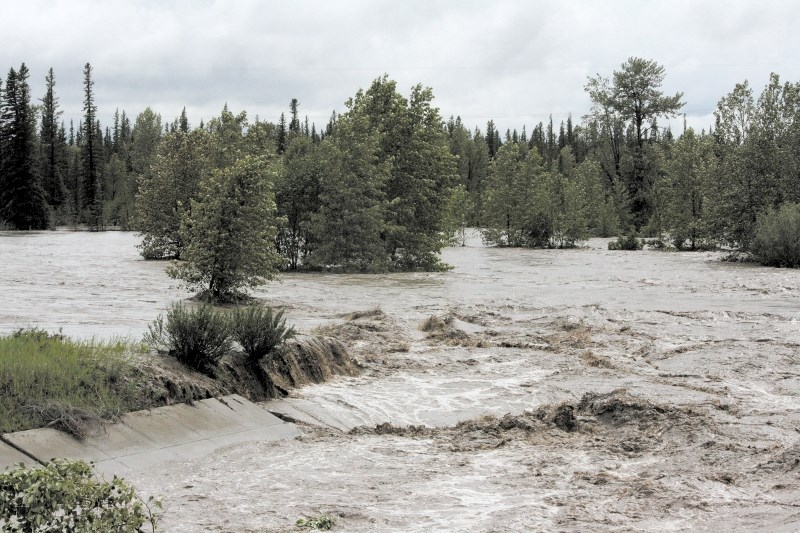The long-discussed Springbank Off-Stream Reservoir (SR1) has been completed and is officially in operation as of this month.
Construction of SR1 began in 2022, following a lengthy engagement process and a commitment from the Alberta government to strengthen flood protection for Calgary and nearby communities.
In June 2013, southern Alberta experienced one of the costliest natural disaster in Canadian history, causing five deaths, displacing more than 80,000 Albertans and resulting in more than $5 billion in damages.
Engagements with the public and First Nations and three years of construction have led to the completion of SR1, which will provide communities along the Elbow River with a floodwall of defence against large-scale floods.
SR1 is located in Rocky View County, about 15 kilometres west of Calgary on Treaty 7 land. It is a dry (off-stream) reservoir that will only hold water during a flood emergency, diverting flood water from the Elbow River before releasing it back into the river after the flood risk has passed.
The reservoir is 4.7 kilometres long, 24 metres wide, and 29 metres high, containing 70.2 million m3 of reinforced concrete for storage capacity, which is about 28,000 Olympic-sized swimming pools.
SR1 is the first of its kind in Alberta, using a coordinated approach to engage multiple aspects of flood mitigation infrastructure.
It will work in tandem with the Glenmore Reservoir and other flood mitigation infrastructure in and around Calgary to manage downstream water flows and reduce the impacts of floods by temporarily holding water and reducing flows in the Elbow River.
Devin Dreeshen, Minister of Transportation and Economic Corridors, said with flood season here, Calgary and southern Alberta can rest assured that they will be protected from future large-scale floods like that of 2013.
"SR1’s innovative design will ensure people, communities and businesses are buffered from the most devastating physical and economic impacts of major floods," Dreeshen said.
Todd Loewen, Minister of Forestry and Parks, said the Springbank Reservoir reflects government's commitment to protecting Albertans, wildlife, and the diverse landscapes we all share.
"This flood mitigation measure will ensure critical habitats are protected, meaning fish and wildlife populations in the region can continue to thrive, while also protecting the outdoor spaces Albertans hold dear,” Loewen added.
The project was not without its controversy. Following the approval in 2014, more than 200 concerned landowners - many from Springbank, Bragg Creek and Redwood Meadows – attended an open house in Cochrane, with many voicing concerns that the project took over too much private land.
Opposition also stemmed from the project’s potential environmental impacts, a lack of transparency, and consultation and ballooning costs. Others felt the government ignored alternative flood mitigation solutions that have been proposed over the years.
Calgary Mayor Jyoti Gondek called the opening of the reservoir a "turning point."
"The completion of SR1 means we are better prepared, more resilient and actively protecting people, property and prosperity," Gondek said. "I’m proud to see this collaborative investment in long-term safety and sustainability for our region.”
Indigenous monitors were on site during construction, and any items identified as having historical or cultural importance were assessed by an archaeologist and reported to Alberta Culture, in accordance with the Historical Resources Act.
Mitigation and monitoring plans were developed during the regulatory process for fish, air quality, surface and groundwater, wildlife and vegetation to protect critical habitat, fish, and wildlife.
The total cost to build the reservoir was $849.4 million, with $168.5 million coming from federal government contributions. Before construction in 2021, the price tag was announced $430 million.




